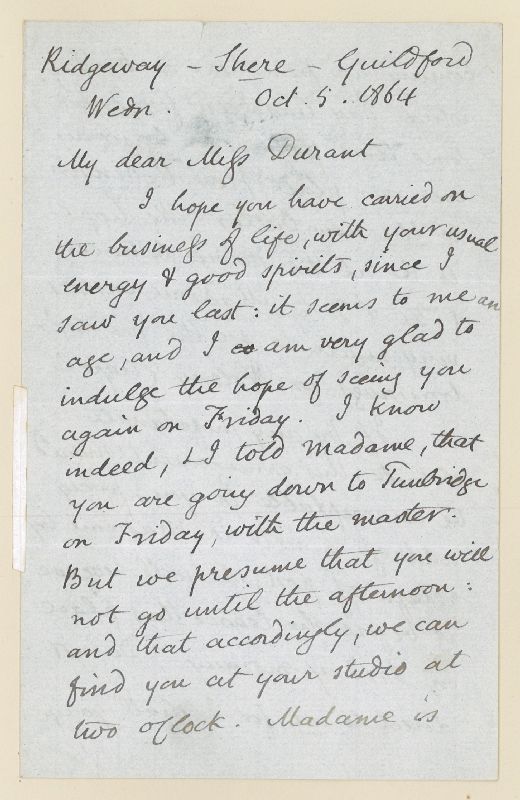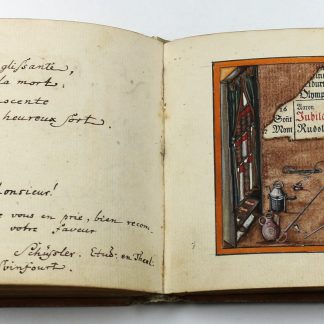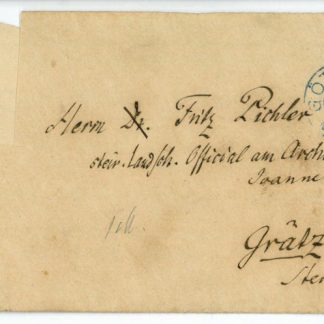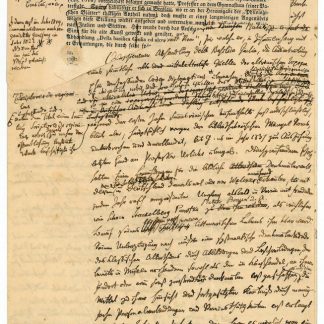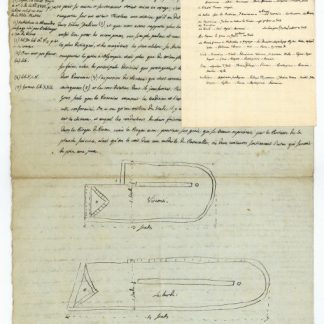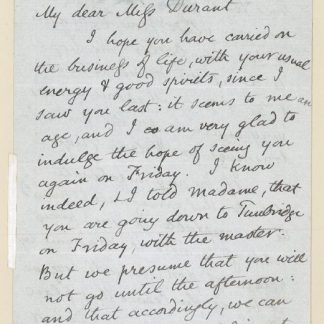Correspondence collection of 23 ALS (14 by George Grote, 9 by Harriet Grote).
67 pp., mostly small 8vo. English with occasional Greek interspersions. Professionally laid into a handsome 4to album, mid-20th-c. half morocco with double gilt cover fillets and giltstamped spine.
€ 4,500.00
Interesting collection of letters by one of Victorian London's most prominent married couples. George Grote, of German descent, was the leading classical historian of his age. His ten-volume "History of Greece" (1846-56, PMM 321) was translated into French and German, and established across Europe the shape of Greek history that still prevails in popular accounts of the ancient world. Grote was also a member of the Ricardo/Bentham/Mill circle, and a radical MP who helped found the University of London. His wife, Harriet Lewin, was a high-spirited, brilliant girl as well as a formidable early feminist, known as "the queen of the radicals" and "the cleverest woman in London". They married in 1820. Of her and her husband, Sydney Smith once remarked: "I like them both. I like him - he's so lady-like. And I like her - she's such a perfect gentleman." - Of the fourteen letters by George Grote, twelve are to the educational writer William E. Hickson (1803-70), editor of the "Westminster Review". They contain Grote's opinions on various political issues, and his reasons for not seeking re-election as an MP; they also refer to his ongoing research for his "History of Greece", to his letters from Switzerland published in 1847, and to other projects: "If I find in Plato + Aristotle any matters calculated to throw light on your question about the [lógos], I will make them known to you. But I doubt your supposition of the earlier existence of Neo-Platonism among Greeks. You speak of 'temples of Theos where Platonism prevailed, + where the divine Logos was worshipped under the name of [Chrestos] before our historical Christ' - If any such existed, I apprehend they must have been among Alexandrine Jews or Hellenised Jews elsewhere - not among Greeks [...] I possess a work in German of very considerable learning, which maintains the same views - Gförer's Philo Judaeus [...] The whole spirit of your book is instructive [...] It is neither pro-Christian, nor anti-Christian - which is the proper spirit for an historian [...]". There is an undated letter to the Review's subeditor, George Luxford, regarding the publication of a letter from Auguste Comte, and one dated 5 Oct. 1864 to the sculptress Susan Durant, who not only created the marble medallion of Grote that now hangs in University College, but also had been his lover. The affair had come to a head in September 1864; although he broke off the romantic attachment when Harriet threatened separation after 44 years of marriage, the Grotes obviously continued to meet Miss Durant socially and professionally: "I hope you have carried on the business of life, with your usual energy + good spirits, since I saw you last: it seems to me an age, and I am very glad to indulge the hope of seeing you again on Friday [...] we presume that [...] we can find you at your studio at two o'clock [...] Madame wishes very much to see the master's drawings for Wolsey Chapel".
Of the nine letters by Harriet Grote, six are also to Hickson: "Your requests count among those which it is next to impossible to refuse - you put, not a pistol, but a principle 'to my head' + bid me 'stand + deliver'! Well, you must have the siller - I send you a £5 note for your good purposes, but must add my settled conviction that the movement has passed away; that a period of collapse and inaction is destined to occupy the remainder of this decade, + that our sympathies with one another are all which remain [...] Literature affords a wholesome relief to minds wounded by the experience of political disappointment [...]" (10 July 1843, with mention of her father's passing at age 90). Hickson may well have found her correspondence more fun to read than that of George: "her lively, opinionated, gossipy, humorous letters, which apparently resembled her conversation, [were] filled with original and pungent expressions" (ODNB).

